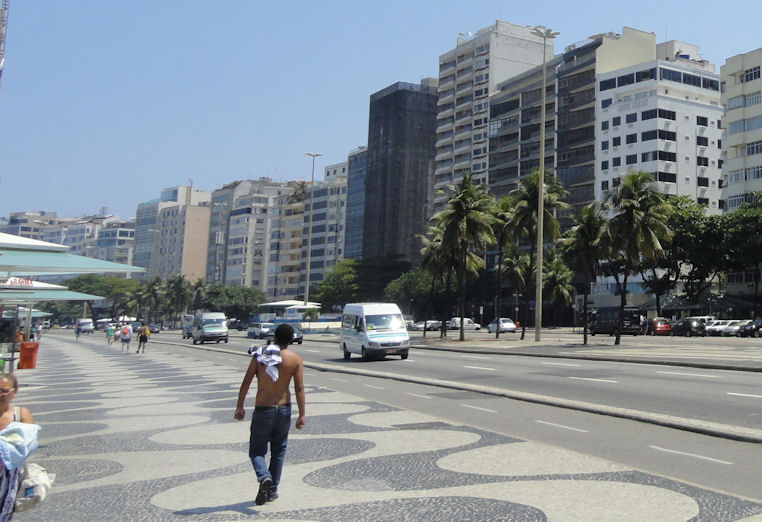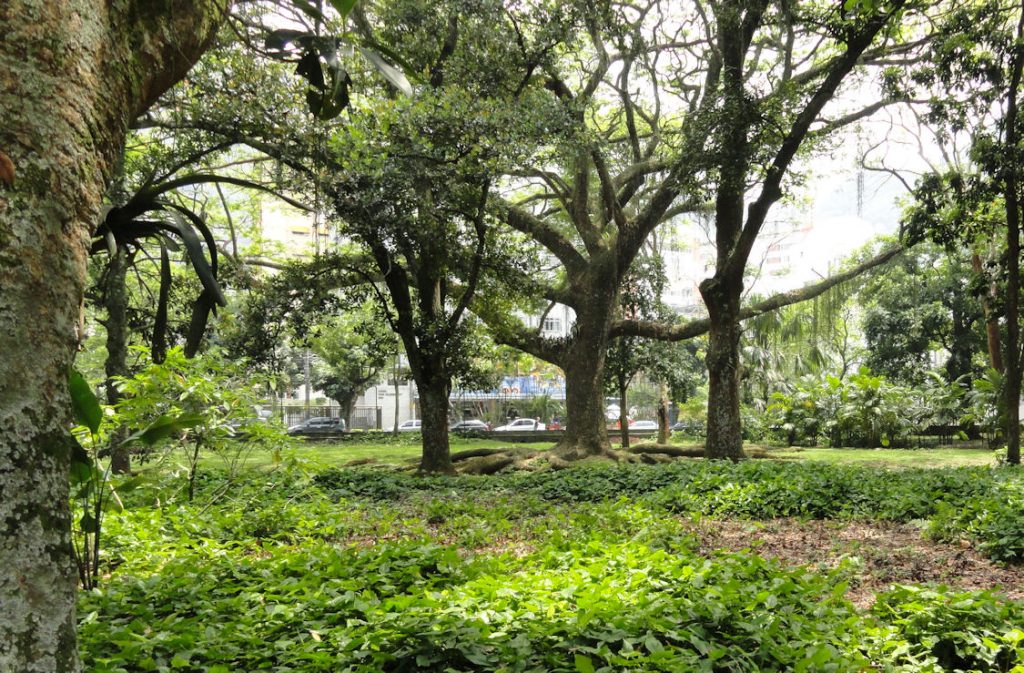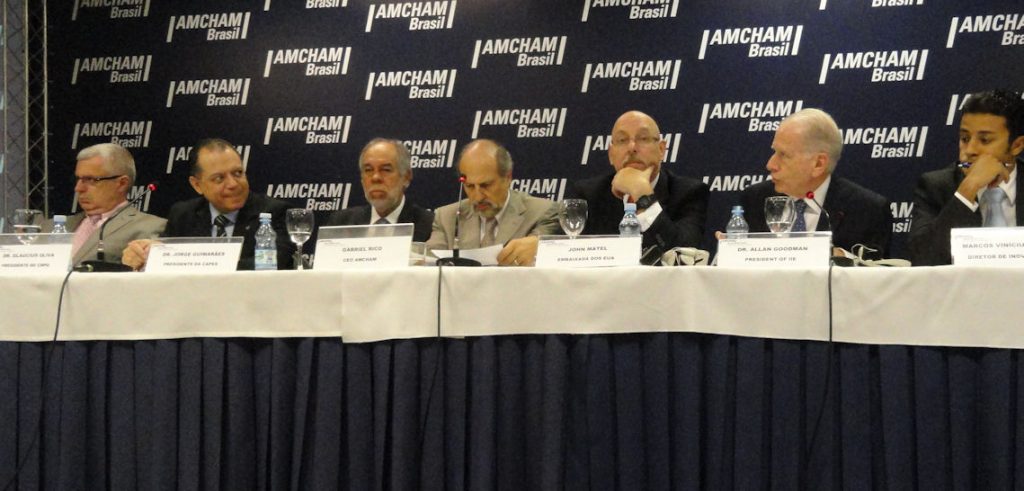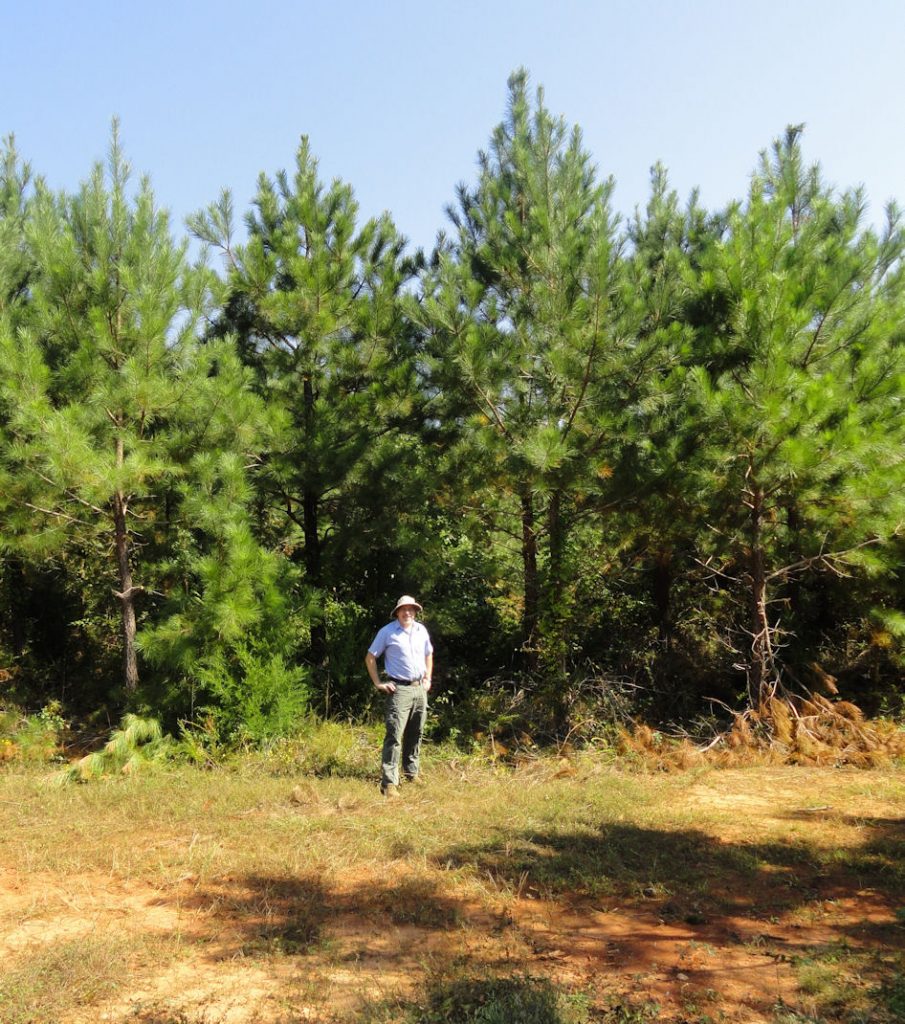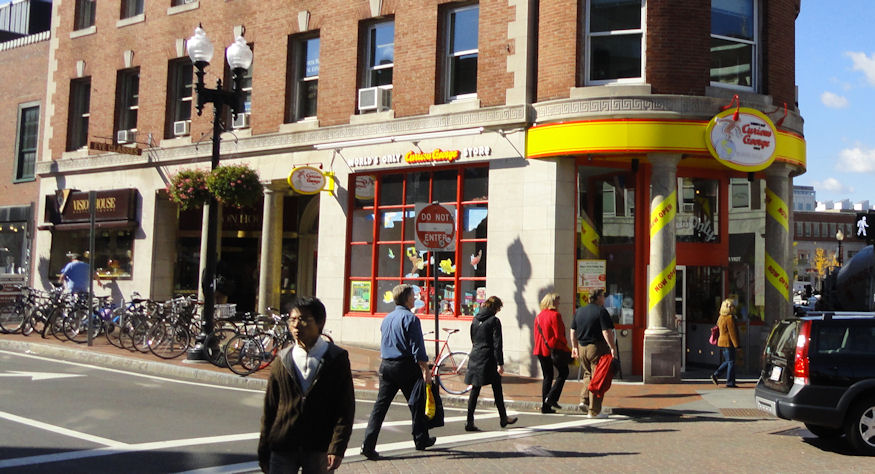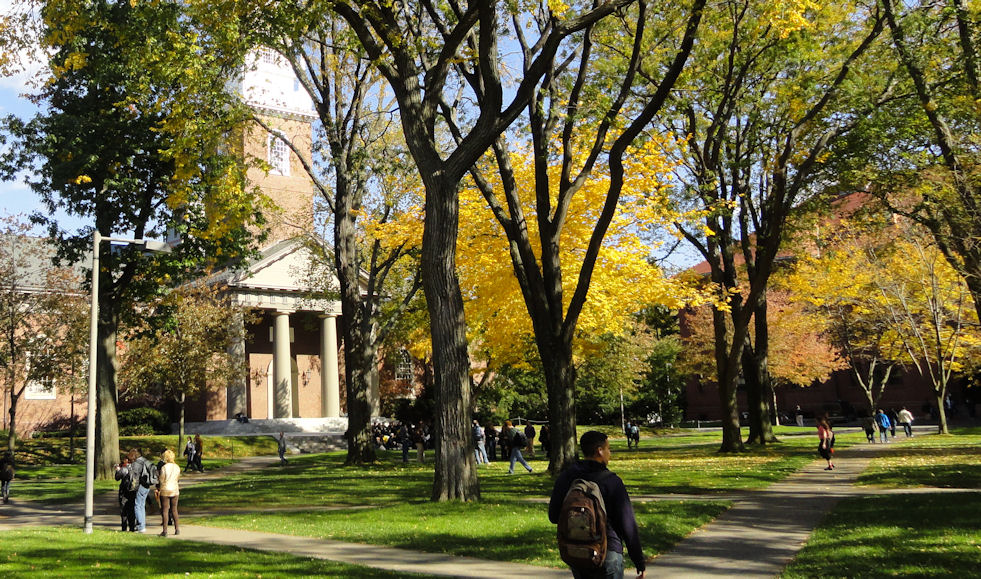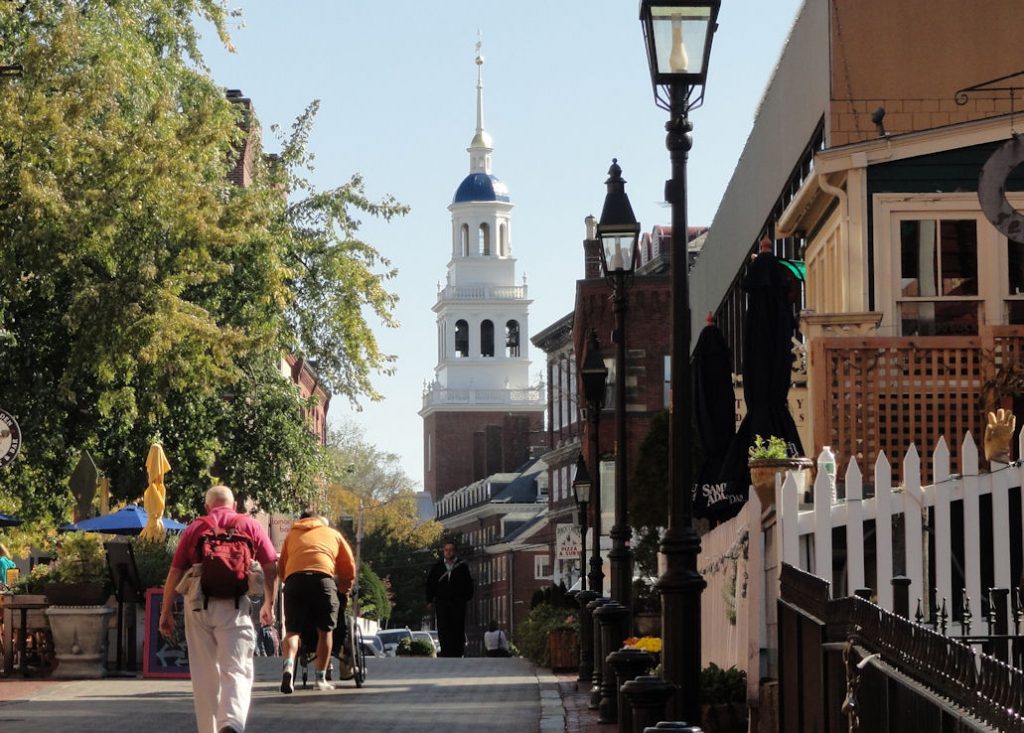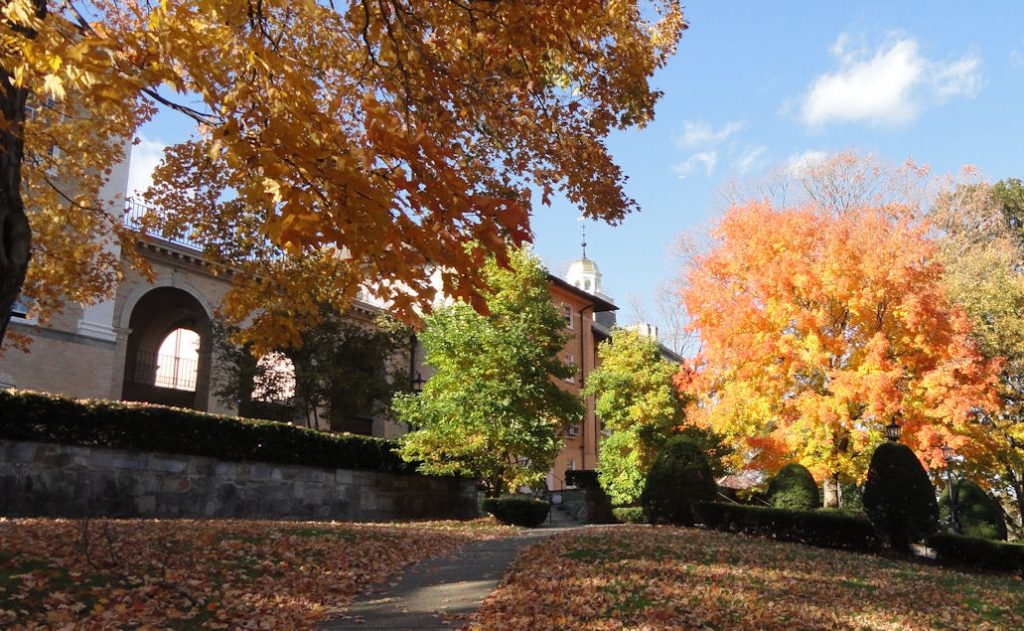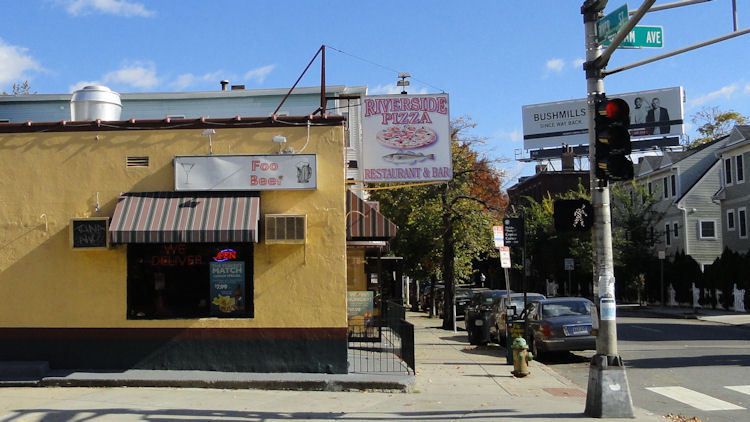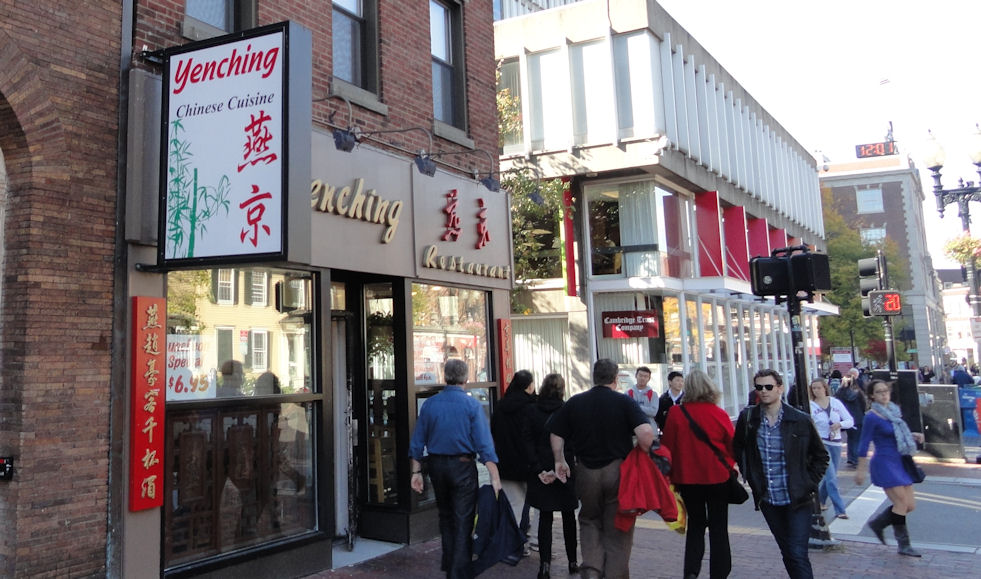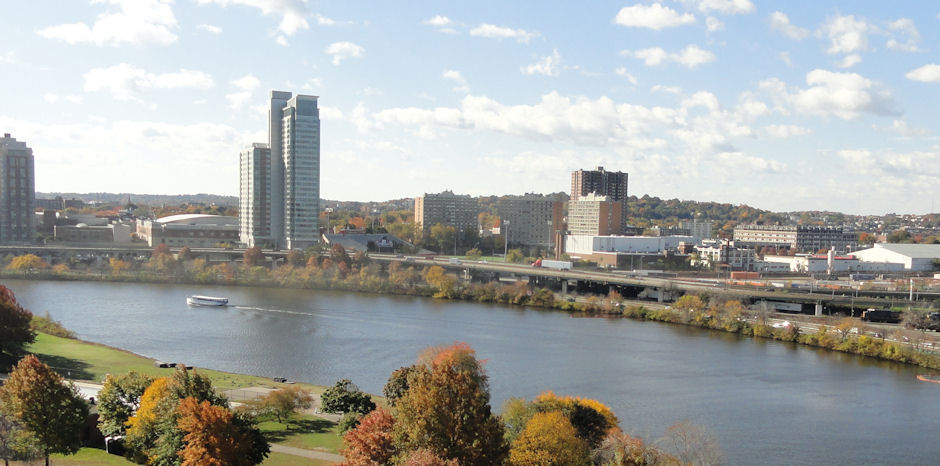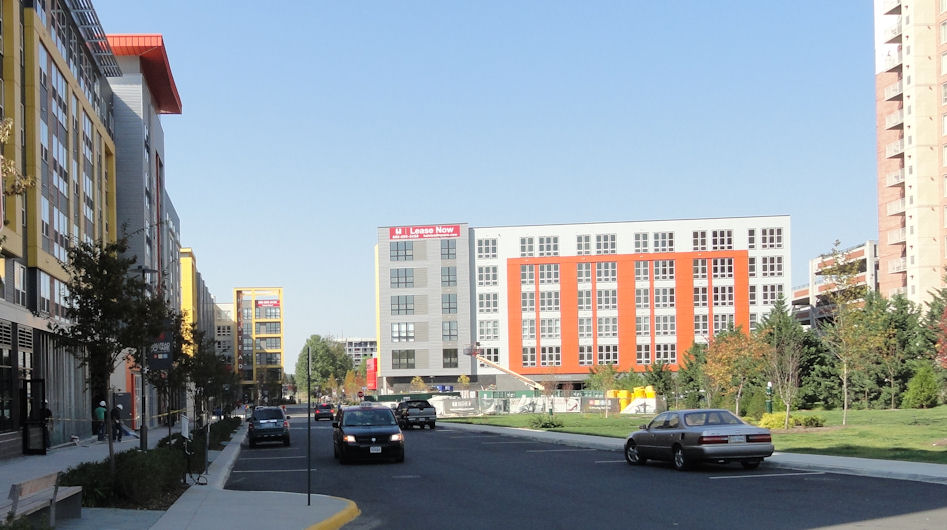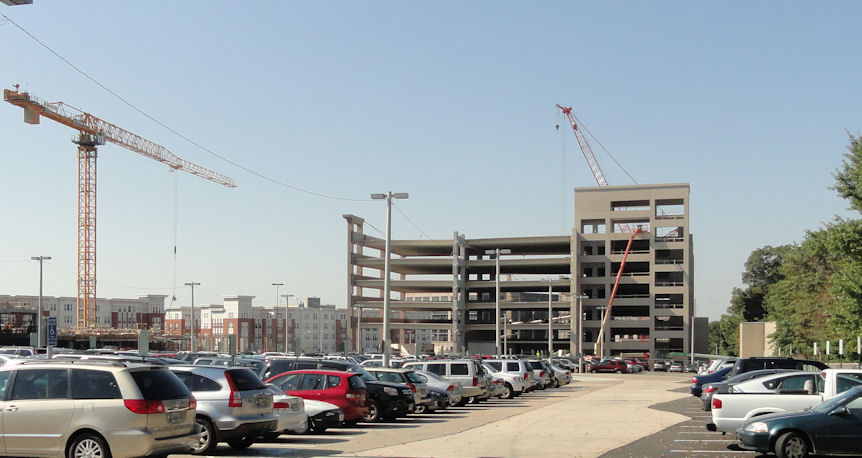Fifty years ago Brazil’s fertility rate (the average number of children a woman can expect to have during her lifetime) was 6.2 amid dire predictions of the imminent local explosion of the population bomb. The rate fell precipitously to 2.5 by 1996; today at 1.8 it has plunged below replacement level, i.e. absent immigration, Brazil’s population will begin to drop if growth depends on this year’s cohort of women for natural increase. Brazil experienced one of the sharpest fertility drops in world history. For Brazil it took only nineteen years to drop from an average fertility rate of three children per woman to a rate of two. Only South Korea experienced a faster decline. In the general demographic transition, the transition from the high fertility rate of more than six to replacement level, the trend that required more than a century to play out in much of Europe, has happened in decades in Brazil.
It should be noted that Brazil’s population will continue to grow for several decades because of demographic inertia, probable international immigration and increased life expectancy. Because of recently higher fertility rates, Brazil still has a young population compared with many other countries. The median age in Brazil was 28.3 in 2011 (the U.S. median age is 36.9 and it reaches around 44 in places like Japan, Italy and Germany.) As larger numbers of Brazilian women enter childbearing age, their children will continue to contribute to population growth even if the rate per woman drops and remains below replacement level. However, as the cohorts of larger generations pass through and beyond their child bearing ages and as the older generations pass into the next world, population will stabilize and then decline. If current trends continue, this will happen sometime around 2035. Of course, “current trends” almost never continue unchanged, so making projections this far out more art than science. Nevertheless, we can say with absolute certainty that no additional Brazilians will have been born in the past and most of the Brazilians who will be alive in 2035 are already alive today. Once birthrates have dropped below replacement level for more than a short period of time, there have been no cases where they have subsequently jumped substantially and sustainably. (Even in the famous case of the U.S. “baby boom”, fertility rates went from a low of 2.0 during the depths of the Great Depression to 3.7 during the peak of the boom, from which they subsequently declined to below replacement level. At their highest point, however, fertility rates of the baby boom never reached normal rates of the previous century.)
Brazilian media has recently carried stories about Brazilian middle and upper class Brazilians women aspiring to have three or more children, but this has not turned up in actual statistics. Summing up, Brazil’s population is current experiencing an accelerated demographic transition from a high population growth rate to a stable and perhaps even declining population within the lifetimes of many people already in the workforce. There is no reason to expect any radical changes from this trajectory. What are some of the causes and consequences?
Why the sudden drop?
Explanations for Brazil’s drop in fertility are many and disputed. None account for the whole story. Government planning had little to do with the decline. The Brazilian government did not have a formal national program to advocate birth control and devoted almost no resources to family planning. In fact, for much of the period when fertility rates were dropping the most, foreign NGOs and population control experts criticized Brazil for doing little or nothing to encourage birth control. Some even identified what policy Brazil did have as pronatalist. On the other side, however, although abortion remains illegal, sterilization and contraception are freely available in Brazil’s public health facilities.
General increases in prosperity, as Brazil has experienced in recent decades could be seen as both a cause and effect of lowered fertility rates, but fertility rates declined both in good economic times and bad. Rates have also dropped among both poor and rich women. One of the unexpected aspects of recent statistics was the drop of fertility rates among the dwellers of the poorest shantytowns (favelas).
Many Brazilians with whom we spoke credit the “Bolsa Familia” under which a family earns less than 140 reais ($70) per person per month gets a monthly stipend of 22 reais (about $12 USD) per child , to a maximum of three children, on the condition that the children attend school. The causality goes beyond the incentive involved with limiting benefits to three children. The theory goes that as poor women see greater opportunities for their children gained through the payments and the growing economy, they want to give each child an even a better chance for a good life. Limiting total numbers of children allows more resources and more time to be devoted to each one. In the longer run, the Brazilian government hopes that education will help break the cycle of poverty, among the traits of which are large numbers of often improperly tended children.
An unusual but plausible explanation for this is the persistent widespread popularity of tele-novellas, evening soap operas watched by large percentages of the Brazilian population. Television sets have been ubiquitous in even the poorest Brazilian homes for more than a generation. A content analysis of twenty-five years of Globo (Brazil’s television network) novellas found that 72% of the leading women featured in the stories were childless and an additional 21% had only one child. This was in significant contrast to the norms of Brazilian society at the time. http://www.iadb.org/res/files/WP-633updated.pdf .
While this explanation might seem glib or superficial, we generally accept that thirty second television advertisements can sell people products, political candidates and habits. Why is it so farfetched that hour-long television programs can sell a lifestyle? Correlating with this, a 1996 study found that the “wanted” fertility, i.e. the number of children Brazilian women ideally would have, in Brazil was 1.8, which is the rate of today. At the time of the survey, the rate was 2.5. Perhaps in the intervening seventeen years reality caught up with aspiration. http://www.economist.com/node/14743589
Effects of slower population growth
The effects of the drop in fertility rates are many and at least for the next couple of decades mostly positive. After that, the tradeoff of benefits and costs are only speculation. Japan and Germany have recently become “net mortality nations,” where deaths exceed births, but there is insufficient experience to estimate the outcomes at this time. The most obvious benefit to the drop in fertility is a corresponding drop in the dependency ratio—the number of children and old people dependent on each working-age adult. As recently as the 1990s, that ratio was 90 to 100 (i.e., there were 90 dependents, mostly children, for every 100 Brazilians of working age). It is now 48 to 100. Brazil is entering what demographers sometimes call the demographic dividend or demographic sweet spot, as the number of dependent children decreases before the number of dependent old people rises enough to increase the numbers of dependents relative to workers, lowering the total percentage of dependents in the society. Brazil’s senior population is relatively small, reflecting smaller generations born sixty plus years ago and lower life expectancies of the past, i.e. fewer were born and fewer of those survived to old age. In the past ten years, life expectancy has risen from 68.9 years to 72.4 years.
Every country going through a demographic transition from high to low total fertility rates gets this demographic sweet spot opportunity only once. For countries of Europe, who took more than a century to make the transition, the benefits and the stresses were spread over decades punctuated by wars and mass emigrations that masked some of the factors. Brazil’s much shaper drop in fertility means that the country will experience a quicker onset, with more intensity in less time. Depending on the vagaries of labor force participation (see below), Brazil will be collecting on the peak of demographic dividend roughly around 2020. During the time of a demographic dividend, it is important that the country grows rich before its population grows old enough to require very extensive resources devoted to care for the aged. This supposes that the country in question is not already spending much on the care of the aged population. Generous retirement benefits may prevent Brazil from successfully navigating the transitions. Even as a young country, Brazil spends 13% of GDP on pensions. This is more than any developed older country except Italy, where the percentage of old people is three times higher than currently in Brazil. Brazil lets more workers retire earlier, on relatively bigger pensions, than anywhere else in the world. Workers need only contribute for 15 years to win the right to retire at full pension at age 65 for men and age 60 for women, while after 35 years paying into the pension system, a man of any age can retire; a woman must pay in for just 30 years to get the same benefit. As a result, Brazilians retire early: 54 on average for a man in the private sector, and 52 for a woman. A tenth of all 45-year-olds are already receiving their pensions. Although many are still working at other jobs, they are also getting their government checks. All this means that Brazil has essentially taken an advance payment on its demographic dividend. This will create trouble even after recent pension system reforms, which affect only new hires. There are 35 years of people already in the system. The political danger is that the large number of pensioners can organize to resist any reforms that cut their slice of the pie; they may even be able to demand more. There are some indications that this is happening.
Less need for new hospitals and schools may increase quality
Because of the favorable demographic trends, Brazil no longer has to race as fast to build schools, hospitals, universities and other social institutions to keep pace with burgeoning population and, presumably, can devote those resources saved to increase the quality of these things. In education, for example, stable or shrinking numbers of children can mean that resources are freed to be concentrated on fewer students to prepare them better for the jobs of the future. Whether and how this will be done is currently being debated energetically among Brazilian opinion leaders and it will be a challenge to get resources allocated effectively. Education advocates are less powerful than pension advocates. This is clear in the spending priorities, if not always in rhetoric. Adjusted for GDP, Brazil spends twice the OECD average on each pensioner, but only two-thirds as much on the education of each child.
Less crime because of smaller criminal cohorts
Crime is another area impacted by demographics. Although the causes of criminal activity are also multifaceted, it certainly will not hurt that favela populations are no longer growing through natural increase. Crime is correlated with the number of young men in a population and in Brazil children in poorer areas are also significant contributors to crime rates. As the numbers of potential new criminal “recruits” declines, crime rates may follow and in fact they have. Brazil remains one of the most dangerous places on earth but the rates of violent crime have been declining over the past ten years, albeit coming down from very high levels. How much of this can be attribute to demographic factors as opposed to general improvements in prosperity or better policing cannot be known. We can never accurately measure a counterfactual. But police officials we have spoken to around Brazil have noticed and mentioned the relatively smaller number of dangerous children and adolescents. Shrinking cohorts of new workers in a growing economy also means more opportunities spread among fewer people, making each worker relatively more valuable.
Labor force changes
Changes in demography obviously impact the size and composition of the labor force. Brazilian political and business leaders clearly recognize that their country is suffering a deficit of educated and skilled labor necessary to run a successful modern economy. This is less the result of
the overall size of incoming generations than of the training and education they have received and has been a chronic problem for Brazil for centuries. There are still plenty of young people to fill the available training and educational slots and an expansion of training and educational opportunity would do much to fill the skill gap. But the relatively smaller cohorts of the current generations are beginning to show up in the unskilled and semi-skilled labor forces where there it was never seen before. One of the mainstays of Brazilian “middle class” life has been cheap domestic help. It was not only the very rich who had maids, gardeners and other sorts of helpers around the house. People with incomes similar to those of an American family of around or just a little above our median income could afford household help. The reason for this was abundant cheap labor resulting from a fairly deep chasm between what we would recognize as middle class and what we would see as real poverty and high fertility rates differentially high among the poorer segments of society fed the system. Today, with fewer workers and more opportunities, the cost of domestic help has risen and the quality has declined. Demographic inertia will carry the population higher, but the drivers have slowed or stopped. Within those smaller numbers, illiteracy has dropped, meaning that people can take advantages of more of the available opportunities. Domestic help doesn’t really need to read. Most other jobs do. Illiterate or semi-literate people are stuck in the jobs that are going nowhere but the kitchen or the garden.
It is a sign of both a stronger labor economy and lower population growth that it is getting harder to get good domestic help. The sudden shortage of live-in maids has created problems for some. A world with full-time maids does not invest much in labor saving devices. Most American homes have appliances such as dishwashers, microwave ovens and efficient washing machines and driers. Brazilian homes are not like this. They didn’t need to be because of the help. Now there is a sudden boom in household appliances. Dishwashers, driers, microwaves etc. are being advertised heavily and selling very well. Most Brazilians have become better off in the last twenty years. Although the income distribution per se has not changed much (The most common measure of inequality is the Gini coefficient. A score of zero means perfect equality: everyone earns the same. A score of one means that one person gets everything. America’s Gini coefficient is 0.38. In Brazil the coefficient fell from 0.59 to 0.55 over the last decade, but inequality remains high), the general increase in wealth has disproportionately helped the poorer Brazilians. Relative wealth matters, but absolute wealth matters more when for those climbing out of poverty. The poor person, who for the first time gets into the income bracket that allows him/her to afford a first car or a first refrigerator, feels a quantum leap in lifestyle. Getting a better model refrigerator or car is not life changing or usually as satisfying. The roughly sixty million Brazilians who have climbed out of poverty still recall life before these conveniences. This is working well for now.
Regional changes
There are also generally better opportunities and people are better able to take advantage of them, as well as fewer people to do the work. These three factors interplay. A big source of labor in general had been the rural areas, especially in the chronically poor regions of the Northeast. Nordestinos, often living on marginally productive small farms, took buses to the cities in the richer South or Southeast whenever life became unbearable or a drought hit the region. Both these things happened with monotonous regularity, but the high birthrates ensured an unbroken supply of very poor people seeking a better return on their hard work.
The Northeast is still poor, but parts are developing rapidly, actually drawing in labor from other places. Some of these are Nordestinos returning to their roots, but others are newcomers. At the same time, population growth is slowing even among the poorest Brazilians. The Northeast is no longer a net source of immigrants to other parts of the country. One of the biggest changes in Brazil’s regions, however, has been the growth of the Central-West.
A related phenomenon is international immigration. Brazil is already actively seeking educated and skilled workers for its new industries, since its school system is not producing them in sufficient numbers. This is also starting to affect unskilled work. As Brazil’s economy grows and Brazilians no longer want to do the dirty jobs or are not present in great enough numbers, others are being drawn in to take them.
A Great Diversity of People
Brazil’s population was shaped by immigration. People from the Iberian Peninsula and enslaved Africans largely displaced and to some extent absorbed much of the indigenous population. Places within around 100 miles of coast were and remain even today the most densely populated part of the country. The ethnic and cultural composition of Brazil was transformed by massive immigration from Europe, the Middle East and Japan during the 19th and early 20th Century. As a result, Brazil has a very diverse population, ethnically and racially. In the most recent census, 91 million (47.7%) Brazilians self-identified themselves as white; 15 million (7.6%) called themselves black. Two million Brazilians said they were of Asian ancestry, and 817,000 identified themselves as indigenous. The remaining 82 million (43.1%) identified themselves as some mixture of the above groups. It is important to note that racial identification in Brazil is not clear cut. The Instituto Brasileiro de Geografia e Estatística (IBGE)–the entity responsible for the census– received 134 different answers when they asked people what color they were.
Mixing and Tipping to the Central West
Brazil’s regions are still distinct, but are becoming less so as migration within Brazil has also been changing the face of Brazil in recent decades. During most of the 20th century people moved from the poor regions of Northeast Brazil to the richer and more economically advanced regions of the Southeast in a migration analogous to the great migration of American blacks from the rural south the industrial north. And like the case of the great migration in the U.S., it is now reversed with net migration to the newly developing regions of the Northeast. Shifts of population to the North or the Amazon region has been going on for a long time, mostly people following one sort of resource boom or another. The pattern is illustrated in the Brazilian state of Acre. It was settled disproportionately by people from the State of Ceará seeking to tap rubber. At that time, the region belonged to Bolivia. The Brazilians became so numerous that the Bolivian government felt threatened. When it tried to establish its authority, the Brazilian population fought back. Acre became part of Brazil.
Another strong stream of migration has been to the central-west. This is partly the continuing effect of moving the capital from Rio de Janeiro to Brasília in 1960. One of the goals of moving the capital was to draw people and economic activity into the Brazil’s interior and it worked. But a greater draw has been the expansion of agricultural frontier into the savanna and the grasslands of the central west. This large area remained largely empty for centuries because the soil and generally harsh conditions were unsuitable to large scale agriculture. Advances in agricultural technologies and especially in genetic composition of crops and animals have completely changed the equation over the last decades. Opportunities created by these changes have drawn large numbers of famers from the South of Brazil and large numbers of farm laborers from the Northeast. The Central-West is a true Brazilian melting pot, with immigrants from all over Brazil looking for opportunity. A visitor to cities such as Campo Grande in Mato Grosso do Sul or Goiania in Goiás is struck by the newness of the cities, relatively good highway connections and their “sunbelt” feel. They are a long ways away from Rio and São Paulo.
The relative shift to the interior has changed Brazilian society in many ways, some unexpected. For example, Brazil is still known for samba and the music of carnival. While this remains very important, a look at the top-ten Brazilian songs reveals that most are sertaneja, a kind of music that resembles American country music and originated in the country’s interior.
The Rise of the Middle Class
Millions of Brazilians have moved to something like a real middle class lifestyle in the last decade. Research shows around 30 million. There has been a great reduction of absolute misery. Many of these people are no longer poor, but that they are still not very secure. Most of the mobility has been from the very low to the not so low. We are not yet looking at a middle class society as we have in the U.S. or Western Europe, but in some ways this initial movement is more satisfying to the people involved. In fact, as aspirations come to outrun results, richer people might feel that progress has been less advantageous.Some progress came from better return/profitability of work, i.e. people were paid better. But a key factor was the economic reforms and currency stabilization gave people the ability to save. Stable currency gave security that allowed people to save and plan. The big inflation Brazil experienced before created a cash, fast-turnover society. Families couldn’t buy on credit, because nobody wanted to sell on credit without charging fantastically high risk premiums. This has now changed.
The difference between types of consumption of the upper, middle and lower classes has diminished. Much of this has to do with generalized technological and economic progress. The rich person might have better quality clothes, mobile phones or refrigerators, but now most people have those things. This was not true in the past. There is a kind of threshold. There is a huge difference between those who have and those who don’t. After that threshold has been cross, the relative differences in quality matter much less.
Brazilian sociologists divide their society into classes A, B, C, D & E based on income. Classes AB make up around 10% of the population, make most of the big decisions and pay most of the taxes. When Brazilians in earlier times called themselves “middle class” they really meant the lower rungs of this AB group. The new middle class in actually the one in the middle, class C. Class C makes up around 50% of the Brazilian population and account for around 68% of the total jobs. The new middle class family has family incomes from around 1200 – 4800 Brazilian Real (about $650-2600). This doesn’t sound like much money but it allows much greater consumptions. The Commercial Federation of Sao Paulo estimates that from 2003-2010 the increase in consumption among classes CDE double that of AB.
Brazil has significant social mobility, but it remains a country of great inequality. Much of the mobility has been in the lower part of the pyramid. The problem has been what we would call human capital and it will probably get worse. People achieve mobility by hard work, cleverness and gumption, but such things will take most people only so far. Someone can open and operate a small shop he/she has the above characteristics plus some common sense. But as the business grows, owners need things like accounting skills, for example. To make the jump to AB, poorer people need education and specific skills, increasingly technical skills. The educational system and their life experience tend not to give them these skills.
Historical Parallels
The experience of history provides only limited guidance. Many countries have passed though similar demographic transitions, but none so quickly until today. Beyond that, Brazil is a country of continental dimension, which makes a difference. The closest parallel is the U.S., which is big and diverse like Brazil and passed through a quick, although relatively less steep, transition after 1962, when the postwar baby boom abruptly ended. Declines in fertility rates were masked and mitigated not only by demographic inertia but also by a surge in immigration, which began about the same time. This could be the Brazilian scenario, but there are a couple of reasons why it might be different.
The first factor is lack of large and fast growing populations in potential donor countries on Brazil’s border. There is no equivalent of Mexico. Second has to do more with Brazil’s internal dynamics. Despite recent growth, Brazil’s economy is only around 1/7 the size of that of the U.S. Brazil will not be the immigration magnet that the U.S. was during the last fifty years. Another factor is that while overall labor costs in Brazil are relatively high, the cash actually received by unskilled workers is not. Beyond that, Brazil has a much larger pool of underemployed or inefficiently employed labor. The challenge for Brazil will not be the size of the labor force in general, but the size of the skilled and educated labor force specifically. This challenge is unlikely to be addressed by mass immigration of skilled workers but rather by upgrading the skills of the new generation of native Brazilians. This does not invalidate the parallel with the U.S. but it may take it back to an earlier parallel, during the time of the Great Migration of the first half of the 20th Century when massive numbers of African American moved from the South to Northern cities.
While historical parallels are instructive, Brazil will develop in its own way.


